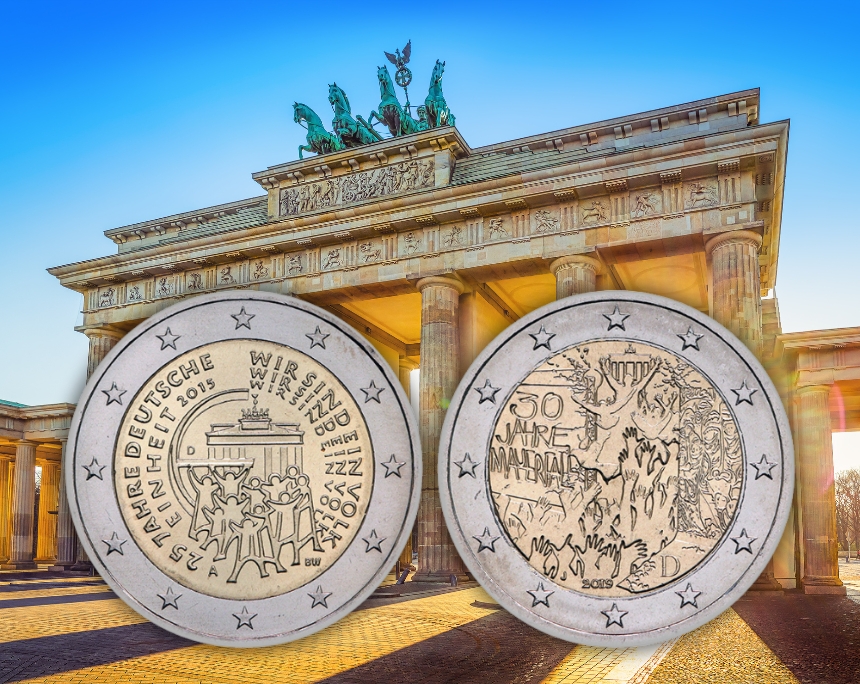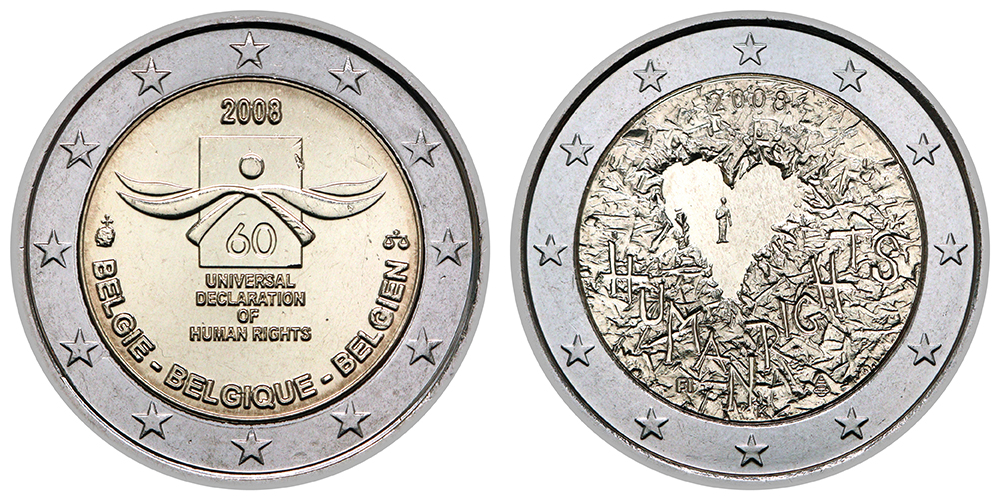Unity Coin Sows Discord: More Than Just a Matter of Taste?
By Sebastian Wieschowski
As soon as plans for a 2-euro commemorative coin for the 35th anniversary of German Unity were announced, the usual collector forums lit up with criticism: “We really don’t need more Unity coins. It’s not going to bring the people any closer together,” was one of the more polite comments.
Content
Criticism from prominent figures too
When the final design was revealed in mid-September 2024, all hell broke loose: The typography was ridiculed in one forum as “the epitome of laziness,” while another collector remarked, “Unity still hasn’t been achieved, even after 35 years.” It wasn’t just anonymous trolls chiming in – prominent numismatists added their voices to the chorus of critics.
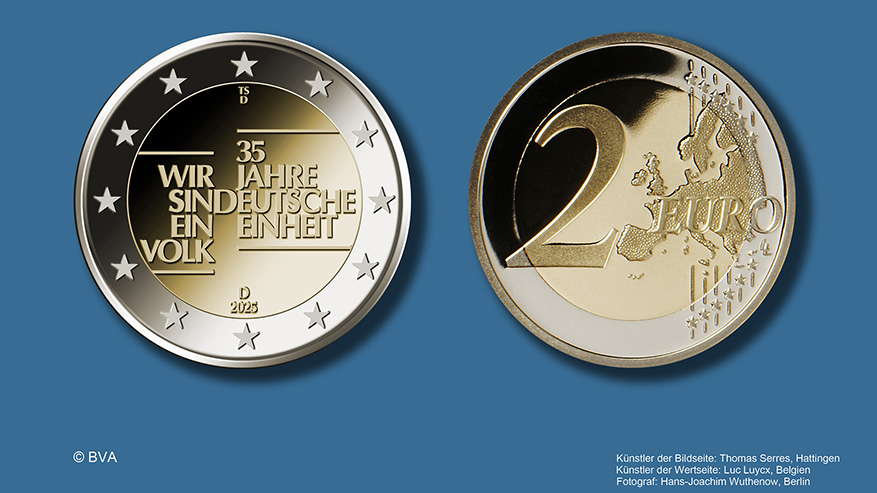
The design of the 2-euro coin commemorating the 35th anniversary of German reunification is causing debates. Artist of the coin’s obverse: Thomas Serres (Hattingen), artist of the reverse: Luc Luycx (Belgium), photographer: Hans-Joachim Wuthenow (Berlin).
Professor Dr. Bernhard Weisser, Director of the Numismatic Collection at the Berlin State Museums, posted on “X” (formerly “Twitter”): “Germany in 2024: Everything is wrong with this coin. A purely graphic design for a coin relief, an image layout that doesn’t suit the round form of the coin. And ‘We are one people’? How helpless and unimaginative.” His critique was directed at, among others, the Ministry of Culture and the Ministry of Finance.
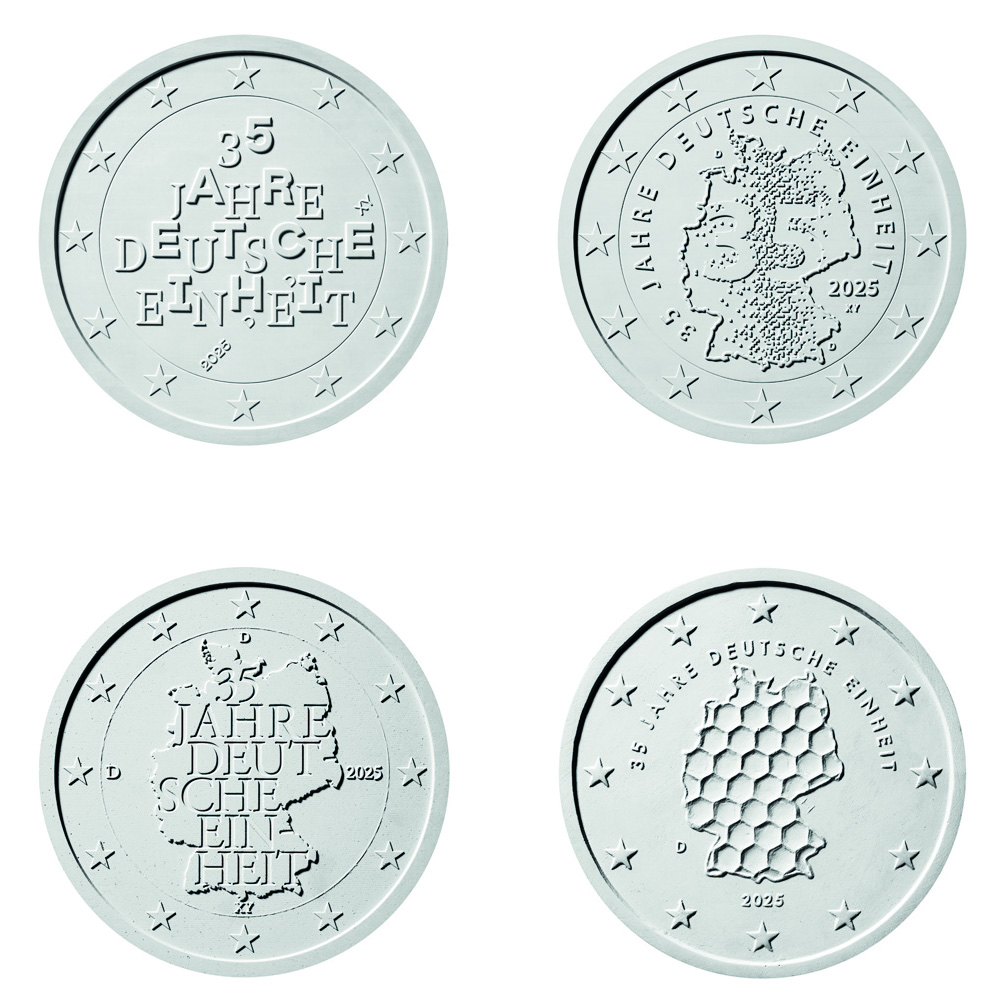
What if? Four design proposals from the competition for the 2-euro coin marking the 35th anniversary of German Unity. Photos: Bundesverwaltungsamt
What happened?
The Ministry of Finance had published the results of the design competition for the coin marking the 35th anniversary of German Unity. The national side of the coin shows a typographic composition: “Along a slightly left-shifted vertical axis, the words ‘We are one people’ appear right-aligned on the left side, stacked on top of each other. On the right side, the words ’35 years of German Unity’ are left-aligned, also stacked. Both text blocks are slightly offset along the central axis and are framed by horizontal lines at the top and bottom. The link between the two is formed by an enlarged ‘D’ in the centre,” reads the somewhat clunky official description. The twist: The offset composition of the text blocks is meant to symbolise that there were Germans in the East and West who have been united by the letter ‘D’ for the past 35 years. “Despite its seemingly simple composition, the coin evokes a variety of associations, such as the open wall, hinted at by the separated lines,” the Ministry of Finance concludes.
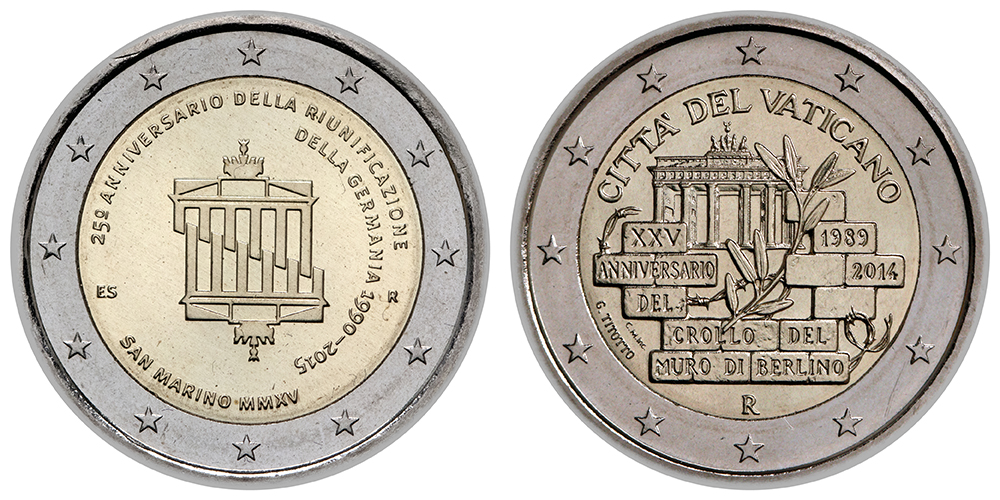
The fall of the Berlin Wall and reunification portrayed differently – on 2-euro coins from San Marino (2015) and the Vatican (2014). Photos: Wieschowski
However, this high level of symbolism doesn’t seem to resonate with many collectors. Most commentators appear uninterested in the deeper meaning behind the design and are simply bothered by the coin’s appearance. This raises the question: Could it have been done differently? The answer is yes – as documented in the design competition materials. The jury had eight designs to choose from. Not only was the winning design by Thomas Serres from Hattingen typography-based, but other proposals were also dominated by lettering. Some of the other designs featured symbols like a map of Germany or the Brandenburg Gate.
German collectors united in anger?
The relationship between German reunification and numismatics seems to be particularly complex and fraught with conflict. A previous 2-euro coin related to reunification had also sparked debate in the German-speaking numismatic community: In February 2019, when the minting programme for the year was already set, the Ministry of Finance unexpectedly announced an addition: the 2-euro coin “30 Years of the Fall of the Berlin Wall,” which was released in autumn 2019 as an (almost) identical German-French joint issue.
A strong statement – but only at first glance. Many collectors wondered why this anniversary hadn’t been announced much earlier as part of the regular minting programme for the previous year. The suspicion among many coin enthusiasts: this commemorative issue hadn’t originally been planned at all – and it was convenient for the Ministry of Finance that France had planned an entire series of commemorative coins for the fall of the Berlin Wall, with their chief engraver Joaquin Jimenez personally overseeing the artistic execution of a 2-euro commemorative coin. Germany was able to piggyback on the work of their French neighbours, without having to hold their own design competition.
It seems the Ministry of Finance remembered the storm of criticism from 2014 when Germany was lambasted in the numismatic community for not issuing a commemorative coin for the 25th anniversary of the fall of the Berlin Wall, unlike many other Eurozone countries such as San Marino or the Vatican. The first 25-euro silver coin, issued in 2015 for the “25th anniversary of German Unity,” failed to appease many collectors – and for many critics in the numismatic world, it was just another sign of the dismissive attitude towards Unity that the design of the silver coin was simply “recycled” onto a 2-euro coin.
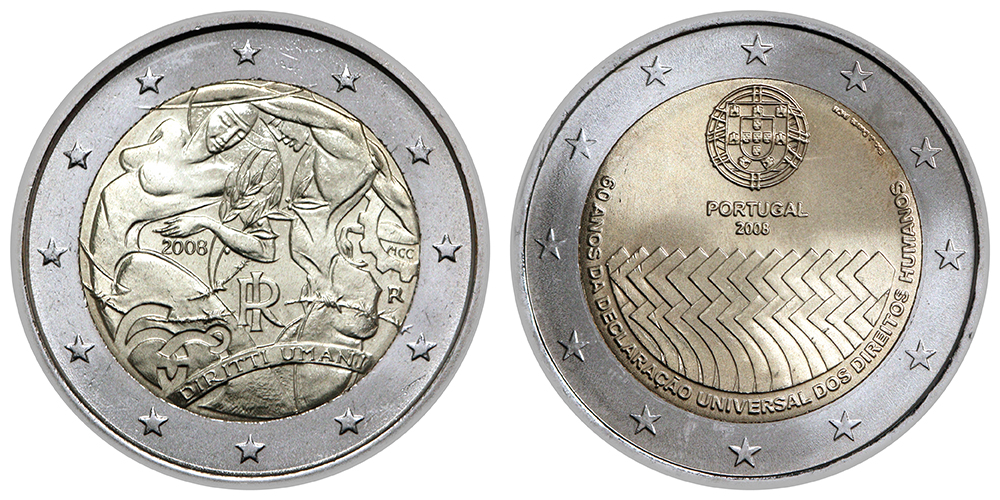
… alongside Italy and Portugal, for the 60th anniversary of the Declaration of Human Rights. Which coin is your favourite? Photos: Wieschowski
Beyond the topic of German Unity, the current debate in the world of German coins raises a fundamental question: How many different ways can the same event be depicted on a coin, and how much creative freedom do designers really have? The Eurozone countries demonstrated this in 2008, when Belgium, Finland, Italy, and Portugal each issued their own 2-euro commemorative coins for the 60th anniversary of the Universal Declaration of Human Rights – without any coordination between them, allowing the national artists to “do their own thing.” All four countries showed just how diverse coin design can be – and that it is precisely this variety of artistic approaches that makes coin collecting so fascinating.







